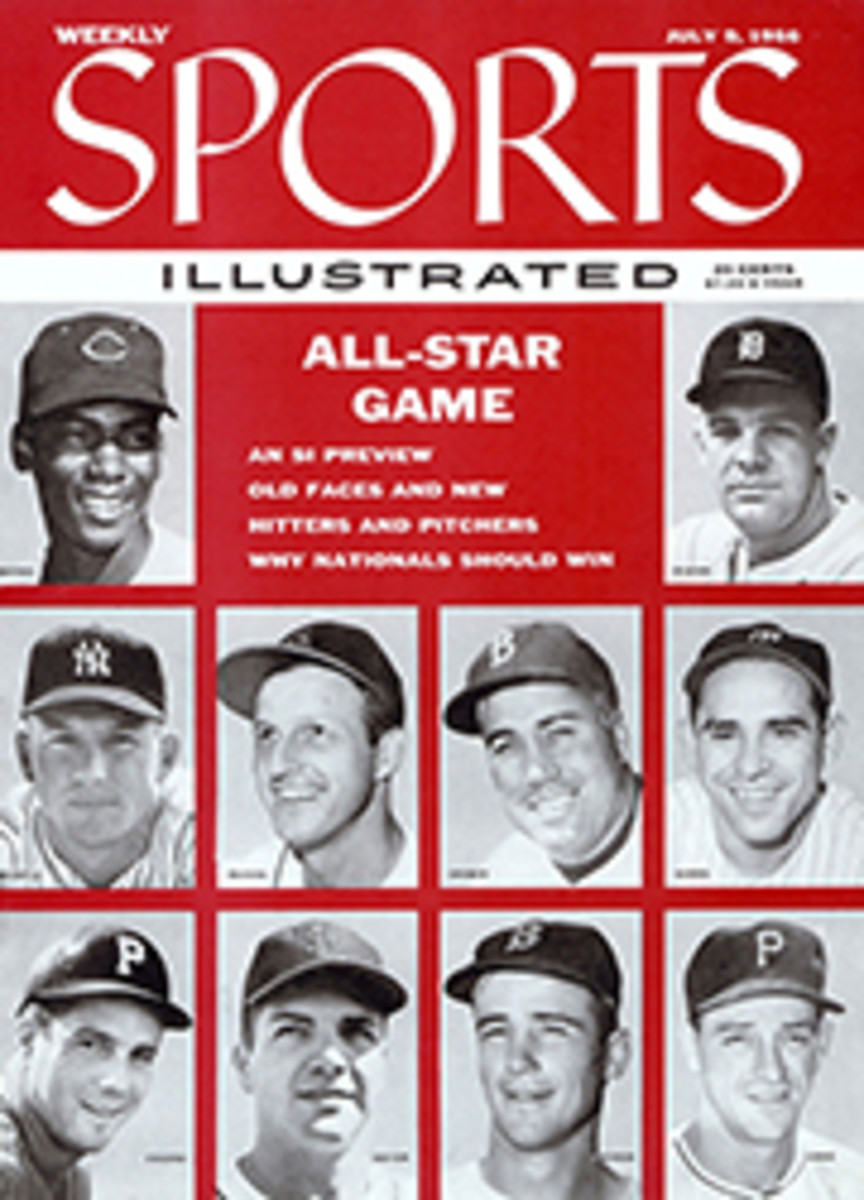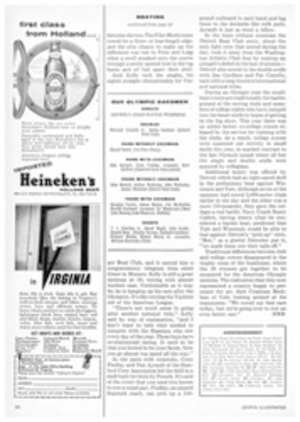
Ferraris swept the French Grand Prix at Rheims, but for nostalgic fans the real meaning of the race lay in the BUGATTI COMEBACK
RHEIMS, FRANCE
In this rolling champagne country 100,000 fervent auto racing fans packed the stands and strained against the bulwarks enclosing a rain-soaked track. It was the day of the venerable French Grand Prix—a carnival day in any year, this time a historic day.
Out on the course rolled sleek and powerful Ferraris, Maseratis, Van walls and Gordinis and—ah, there it was—the new Bugatti 251. After four years of top-secret preparation, an expenditure of some $250,000 and an outlay of 200,000 man-hours, the first postwar Bugatti was making its formal bow.
Bugatti! There have been faster, better, more luxurious and more popular automobiles since the horseless carriage was invented, but not the speediest Mercedes, the shiniest Rolls-Royce nor the tinniest, most utilitarian Model T ever aroused the kind of adoration inspired by Bugatti.
Bugatti's simple, rounded radiator with its red name plate has become an idol. The Bugatti factory, on a comfortable country estate near the old Alsatian town of Molsheim, has grown into a shrine at which machine-age pilgrims prostrate themselves.
Bugatti owners have been reputed to travel thousands of miles to find a single spare part and to hock the family heirlooms to reconstruct a chassis. One owner proudly boasted that he had spent his life's savings rebuilding an engine. Another, hysterically frightened at the possibility of an accident, refused to drive his Bugatti at night and had the headlights removed just to make sure he was not tempted.
In England the Bugatti Owners Club maintains a baronial mansion and a 1,000-yard private race track. It has promoted Bugatti trophies, devised Bugatti pennants, erected a Bugatti memorial gate and designed an official Bugatti timepiece in the shape of a Bugatti radiator. Two years ago the club members set out upon the heroic task of compiling the names, numbers, mechanical details and histories of all the Bugattis in the world. They managed to collect data on 441 and are still appealing for information about the rest.
The origin of this mystical adoration goes back to Milan in September 1881, when Ettore Bugatti was born. The son of an artist, young Ettore's virtuoso tinkering produced first a motor-driven tricycle and then a successful automobile, a 1,300-pound four-cylinder car. In the early years of his development, Bugatti acquired a lifelong dislike for mass production. He often ignored public demands to the extent of insulting his customers. Once when a woman complained about the brakes on her Bugatti, he snapped: "Madam, I build my cars to go, not to stop."
Life really began for Bugatti on Christmas Day, 1909, when he drove to Molsheim, rented an old dye works, whitewashed the walls and hung out his shingle. By the end of 1910 he had produced and sold five cars—cars, incidentally, which are still in existence—and had picked up his apt nickname, Le Patron. "I conceive the automobile," he would say. "The mechanics build it, but they are merely tools in my hands."
Beautifully designed, painstakingly assembled automobiles flowed from Molsheim in the three decades before World War II. Most famous of all was the enormous Type 41, La Royale. Its eight-cylinder engine weighed 770 pounds, had a displacement of 12,760 cc. and generated 300 hp at 1,700 revolutions per minute. Bugatti planned to build 30 of the $40,000 mammoths but cut production to seven when the Depression came along.
While connoisseurs were flocking to buy Bugatti touring cars Le Patron's brilliant racing cars were earning laurels all over Europe. From 1925 to 1929, for example, Bugattis were invincible in the rugged Sicilian Targa Florio. The French Grand Prix fell to Bugatti five times (1926, 1928-1931). Though Bugattis won the 24-hour endurance grind at Le Mans in 1937 and 1939, Le Patron never quite approved of the race's sticky rules. One of his friends explained, "He felt it was like asking Rubens to paint a picture to fit a frame."
When the Germans occupied France in 1940 the factory was seized. It was never bombed, but the buildings decayed, and concrete air raid shelters were built in Bugatti's carefully manicured gardens.
After Ettore's death in 1947 the only remaining male in the family was his 25-year-old second son, Roland (the eldest, Jean, was killed testing a car in 1939). With Pierre Marco, onetime racing driver and colleague of Le Patron, Roland began piecing things together. By 1949 Bugatti was doing a $1 million-a-year business.
The day Bugatti lovers were praying for began to dawn in 1952 when Marco tapped Italian Engineer Giacchino Colombo, then handling production for the Alfa Romeo firm, for plans for a new Grand Prix car. Colombo came up with the rear-engined 251. Powered by a straight-eight, 2.5-liter engine that produced 230 hp at 8,000 rpm and possibly 275 to 280 hp at 9,000, the car had four Weber carburetors, hydraulic disc brakes and a revolutionary independent suspension system. The engine was set athwart the chassis.
For months it was doubtful that the new Bugatti would be ready for Rheims 1956, its cautiously advertised debut. Then a few weeks ago Maurice Trintignant, a 39-year-old winegrower who races for fun, tried out the car at Rheims. He averaged slightly over 112 mph on his fastest tour of the 5.2-mile circuit. "The motor's unbeatable," Trintignant said, but in reality the car was not going fast enough.
Feverish work at Molsheim failed to iron out a major flaw. The positioning of fuel tanks midway on each side of the fuselage somehow threw the car off balance and made winning speeds improbable.
PATRIOTIC DRIVER
Proudly French, Trintignant had refused a Ferrari contract this year so that he could have the honor of introducing the first postwar Bugatti. But he was not hopeful as he walked out on the track last weekend before the immense Grand Prix throng.
"I'll try a few laps," he said, "and see what gives."
A few laps, sadly, was all the Bugatti could give. From the very beginning the race belonged to Ferraris. Peter Collins romped home first over the 61 laps with a course-record average speed of 121.16 mph. Ferrari's Eugenio Castellotti was only three-tenths of a second slower. Then came Jean Behra in a Maserati and World Champion Juan Manuel Fangio in another Ferrari. Trintignant kept his Bugatti working for 18 laps—better, really, than was expected.
The main thing was that Bugatti was back. No true believer would doubt that the pale blue car would again be showing its exhaust to the opposition one of these days.
PHOTO
NEW BUGATTI straight-eight, rear-engined racer has Maurice Trintignant aboard in a tryout. Trintignant drove a twin model this week at Rheims in Bugatti's comeback.
ILLUSTRATION

